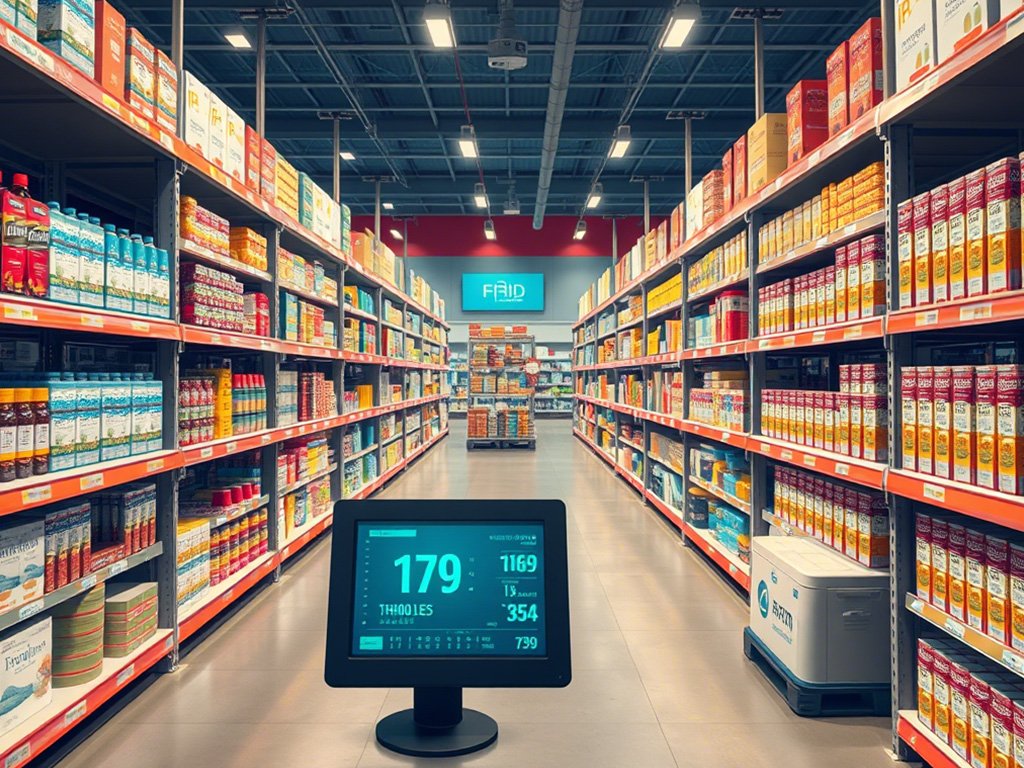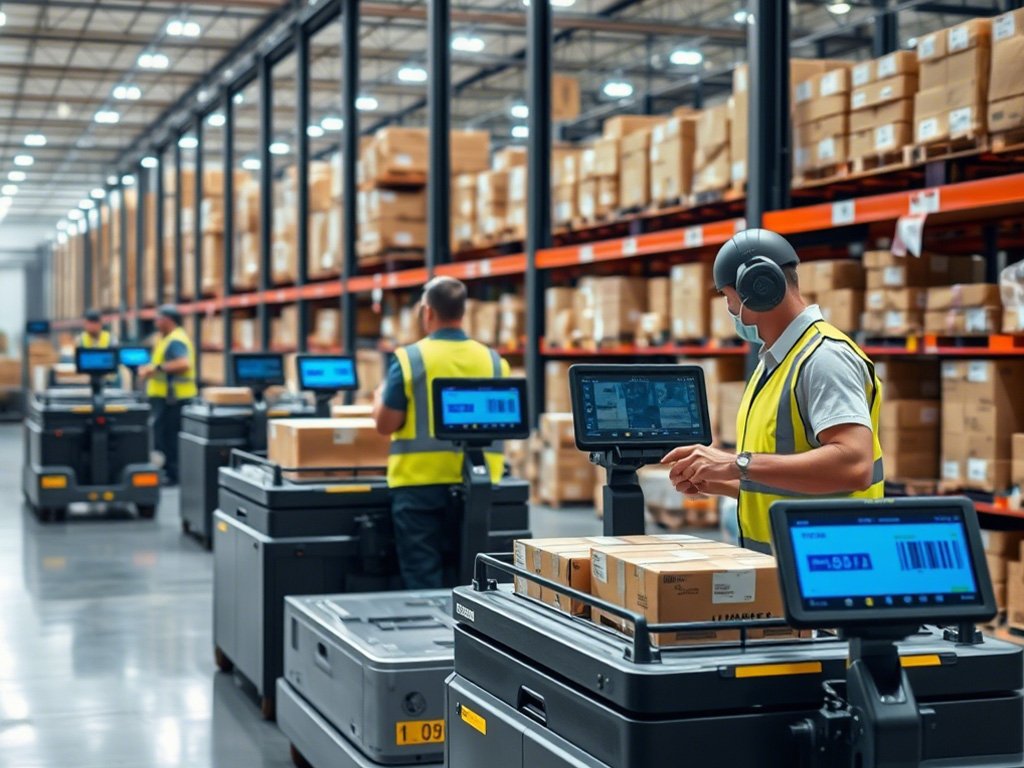
RFID Is Revolutionizing Inventory Management in Retail
In the fast-paced world of retail, staying ahead of the competition means embracing cutting-edge technology. One such innovation that has transformed inventory management is Radio Frequency Identification (RFID). This powerful tool is reshaping how retailers track and manage their stock, improving efficiency, reducing costs, and enhancing customer satisfaction. Let’s dive into how RFID is revolutionizing inventory management in retail.
The Challenges of Traditional Inventory Management
Before RFID, retailers relied heavily on manual processes and barcode scanning to manage inventory. While effective to some extent, these methods came with significant limitations:
- Time-Consuming: Scanning each item one by one was labor-intensive and prone to human error.
- Inaccurate Data: Manual counts often led to discrepancies between recorded and actual stock levels.
- Limited Visibility: Real-time updates were nearly impossible, making it difficult to respond to demand fluctuations.
- Scalability: Businesses can integrate barcoding for smaller, routine operations and RFID for complex, high-volume tasks as their needs grow.
- Shrinkage Issues: Theft and misplaced items went unnoticed until physical audits were conducted.
These challenges not only increased operational costs but also negatively impacted customer experiences when products were out of stock or unavailable.
How RFID Transforms Inventory Management
RFID addresses many of the pain points associated with traditional inventory management. Here’s how:
- 1. Real-Time Inventory Tracking With RFID, retailers gain real-time visibility into their inventory. Tags attached to products allow continuous monitoring throughout the supply chain—from warehouses to store shelves. This ensures accurate stock counts and helps prevent overstocking or understocking situations. For example, if an item is selling faster than anticipated, retailers can restock promptly to meet demand. Similarly, slow-moving items can be identified early, enabling better promotional strategies.
- 2. Automated Stocktaking Gone are the days of manual stocktakes that disrupt daily operations. RFID enables automated inventory audits using handheld or fixed readers. Entire sections of a store can be scanned within minutes, drastically reducing the time and effort required for stock reconciliation. This automation minimizes errors and frees up staff to focus on more value-added tasks like assisting customers or merchandising.
- 3. Reduced ShrinkageRetail shrinkage—caused by theft, damage, or administrative errors—costs the industry billions annually. RFID acts as a deterrent against shoplifting since tagged items can trigger alarms at exits. Additionally, misplaced items within stores can be located easily, preventing losses due to "phantom inventory" (items marked as available but physically missing).
- 4. Enhanced Customer Experience When inventory data is precise and up-to-date, retailers can ensure popular items are always in stock. RFID also supports omnichannel initiatives like "buy online, pick up in-store" (BOPIS) by providing accurate information about product availability across locations. Moreover, smart fitting rooms equipped with RFID readers can suggest complementary products based on what customers try on, creating personalized shopping experiences.
- 5. Streamlined Supply Chain Operations RFID doesn’t just benefit brick-and-mortar stores; it optimizes the entire supply chain. Manufacturers, distributors, and retailers can collaborate seamlessly by sharing real-time data. For instance, suppliers can monitor shipments and predict delivery times, while retailers can plan restocking schedules more effectively.
Success Stories: Retailers Embracing RFID
Several major retailers have already adopted RFID and reaped its benefits:
- Walmart: The retail giant implemented RFID to improve inventory accuracy and reduce out-of-stock scenarios. As a result, they reported higher sales and improved customer satisfaction.
- Zara: : The fashion retailer uses RFID to streamline inventory management and enable same-day restocking in stores. This agility allows Zara to stay competitive in the fast-changing apparel market.
- Macy’s:By deploying RFID across all departments, Macy’s achieved near-perfect inventory accuracy, leading to increased productivity and reduced markdowns.
Challenges and Considerations
While RFID offers numerous advantages, there are some hurdles to consider:
- Cost: Implementing RFID requires upfront investment in tags, readers, and software integration.
- Tag Durability: : In certain environments, such as those with extreme temperatures or moisture, RFID tags may degrade over time.
- Privacy Concerns: Some consumers worry about potential misuse of RFID data, though most applications prioritize security and compliance. Despite these challenges, the long-term ROI of RFID often outweighs initial expenses, especially for large-scale retailers.
The Future of RFID in Retail
As technology continues to evolve, so will RFID’s role in retail. Innovations like AI-powered analytics and IoT integration will further enhance RFID’s capabilities. Imagine smart shelves that automatically reorder low-stock items or virtual assistants guiding shoppers to exactly what they’re looking for—all powered by RFID. Additionally, advancements in tag design are making RFID more affordable and sustainable, paving the way for broader adoption across industries beyond retail.
Conclusion
RFID is undeniably transforming inventory management in retail by offering unparalleled accuracy, efficiency, and scalability. From automating tedious tasks to empowering data-driven decision-making, this technology is helping retailers thrive in an increasingly competitive landscape.
For businesses ready to embrace digital transformation, investing in RFID isn’t just a step forward—it’s a leap toward future-proofing operations and delivering exceptional customer experiences. As more retailers recognize the immense potential of RFID, we can expect it to become a cornerstone of modern retail strategy.
Are you ready to join the RFID revolution?




